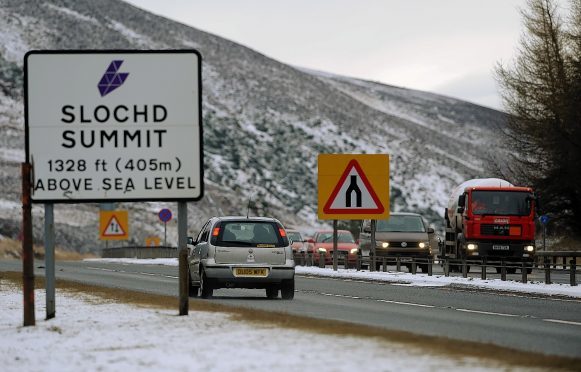One of the most challenging sections of the A9 to be dualled is to undergo investigation work early in the new year.
Among the features on the Dalraddy to Slochd stretch is the remote Slochd Summit, the second highest point on the Inverness to Thurso road.
Motorists have also been warned to expect disruption with traffic management in place along the 15 mile section during five weeks of work.
The follows Transport Scotland awarding a contract worth almost £1million to Raeburn Drilling & Geotechnical to carry out investigation work along the route of the road.
The section is expected to be one of the most challenging in the entire dualling project.
Slochd Summit sits at more than 1,300ft, second only to the summit of the Drumochter Pass, and is heavily constrained by rocks and the Inverness to Perth railway line.
Cabinet secretary for economy, jobs and fair work Keith Brown said: “Building on the vital ground investigation work that has already taken place across the dualling programme this year, this latest ground investigation contract will take place along a very challenging part of the route totalling over 15 miles which includes the dramatic rockface at Slochd.
“We hope to identify the preferred route for this section next year and these investigations will help inform the design work at the next stage.
“With design work for all the remaining dualling projects ongoing and the first section between Kincraig and Dalraddy due to be completed in summer 2017, we remain on target to complete this ambitious programme by 2025.”
The Slochd to Dalraddy section passes villages of Aviemore and Carrbridge which both require new junctions.
It also contains 21 pedestrian and cycle crossings which is the highest number of any of the 12 dualling schemes which make up the £3billion project to upgrade road.
The ground investigation work is expected to begin early next year and take five weeks to complete.
Transport Scotland confirmed that it will introduce traffic management during the works for safety reasons.
The agency said that road users and local communities will be kept informed.
They added that they try to ensure disruption is kept to a minimum.
